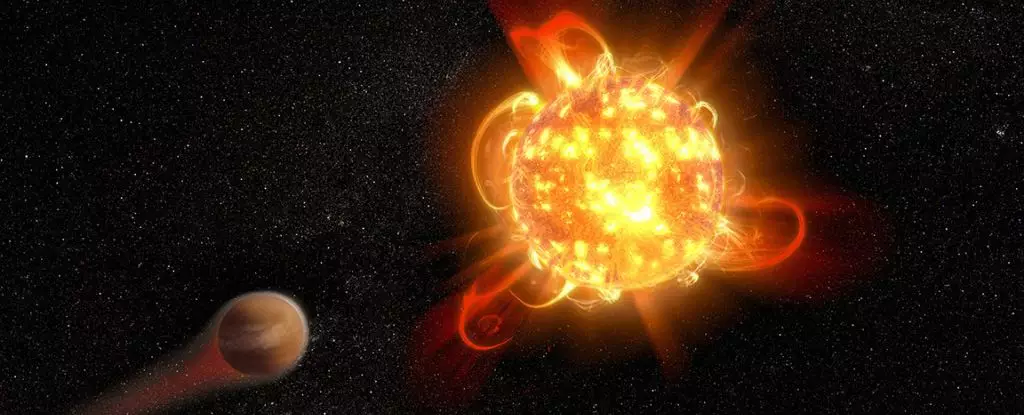Among the plethora of stars scattered throughout the cosmos, M-class stars, commonly referred to as red dwarfs, are perhaps the most enigmatic. These stars, significantly cooler than our own Sun, are characterized by their relatively modest size, both in terms of mass and surface area. What makes red dwarfs particularly fascinating is their incredible longevity; these celestial bodies consume their fuel at a much slower rate compared to their larger counterparts. As a result, they can shine brightly for billions of years, making them prime candidates for hosting planets that might bear life.
Moreover, red dwarfs dominate our Milky Way galaxy, accounting for around 70 percent of its stellar population. Their stability and vast abundance provide a compelling rationale for astrobiologists who investigate potential habitats for extraterrestrial life. The prospect of rocky planets residing within the habitable zone — the region where conditions might be just right for liquid water — further enhances the allure of red dwarf systems. However, beneath this seemingly serene exterior lies a worrying truth: red dwarfs are notorious for emitting frequent and intense stellar flares.
The phenomenon of stellar flares, particularly from red dwarfs, has been a topic of considerable scientific discussion. These outbursts, while fascinating, pose significant risks for any planets that many theorize might orbit these stars. Recent findings have illuminated just how perilous these flares could be, raising alarms about the habitability of these seemingly friendly worlds.
A recent study delves into over a decade of observations collected by the now-retired GALEX space telescope. Researchers analyzed data from 300,000 distant stars, focusing notably on 182 flare events from M-class systems. While many prior studies centered on emissions captured in optical wavelengths, this investigation uniquely concentrated on ultraviolet (UV) radiation, specifically the near UV and far UV ranges. The findings suggest that the spectral output associated with these flares could be far mightier than previously believed.
Many scientists have long recognized that UV radiation plays a pivotal role in atmospheric chemistry and the development of life. In marginal doses, high-energy photons emanating from stellar flares could catalyze the formation of complex organic molecules, laying down the building blocks necessary for life. Nevertheless, in more substantial doses, this same radiation possesses the destructive capacity to strip away atmospheres — including critical layers of ozone that shield planets from harmful solar radiation.
The crux of the recent study indicates that the prior methodologies employed to estimate the UV emissions during solar flares significantly underestimated their intensity. Traditionally, researchers modeled this radiation under a blackbody spectrum — approximating the temperature of flare emissions at around 8,727 degrees Celsius (15,741 degrees Fahrenheit). However, data from the new study revealed that a staggering 98 percent of the observed flares emitted UV radiation levels far exceeding those expected under this conventional model. It appears the spectral energy distribution for these stellar outbursts expresses a much higher temperature than estimated, undermining prior notions of their potential for supporting life.
Given that the emissions produced by red dwarf flares could be considerably more hazardous than earlier assessments suggested, we must face an uncomfortable reality: the potential for life in these systems appears far more tenuous than once thought. While a planet may meet essential criteria for habitability — having a surface temperature favorable for liquid water, for example — the frequent and intense UV bursts from its star could jeopardize its atmosphere and, consequently, its ability to support life.
As we venture deeper into our explorations of the universe, it becomes crucial to reassess our methods and expectations about where life might thrive. Red dwarfs, with their captivating promise of hosting habitable planets, also embody a stark reminder of the complexity and harshness inherent in the cosmos. Our studies of life beyond Earth must now account for these unpredictable stellar behaviors, as they drastically shape the potential environments in which life could exist. In this age of discovery, examining the risks posed by such common stars like red dwarfs could ultimately refine our understanding of where life might flourish amidst the vastness of space.

